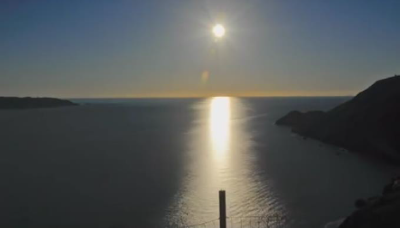103. Ursa Major should not be visible from latitude 30 degrees south on a spherical Earth
"There are several constellations which can be seen from far greater distances over the face of the Earth than should be possible if the world were a rotating, revolving, wobbling ball. For instance, Ursa Major, very close to Polaris, can be seen from 90 degrees North latitude (the North Pole) all the way down to 30 degrees South latitude. For this to be possible on a ball-Earth the Southern observers would have to be seeing through hundreds or thousands of miles of bulging Earth to the Northern sky."
Dubay does not understand basic trigonometry
As I recall my kids had this nailed at age 13, so it should not be too complicated even for Eric Dubay if he puts his mind to it. You will always be able to see a constellation at some point in the year if the difference between its declination (angle above the equator) and the observer’s latitude is not more than 90 degrees.
Ursa Major has a declination of +55.38°. I.e. it is over 55 degrees above the equator. That means it is 35 degrees away from Polaris (Not “very close” by any definition ... another lie), and 85 degrees away from an observer standing at 30 degrees south latitude.
Since it would be visible up to 90 degrees away from an observer, of course Ursa Major can be seen from 30 degrees south of the equator on a spherical Earth
Is Dubay just incompetent at trigonometry? Probably, but I believe that in this "proof" he is deliberately lying in order to back up his spurious claim that the observed stars would be impossible on a spherical Earth.
< Prev 101-110 Next >
 |
| Source: https://en.wikipedia.org/wiki/Declination |
Dubay does not understand basic trigonometry
As I recall my kids had this nailed at age 13, so it should not be too complicated even for Eric Dubay if he puts his mind to it. You will always be able to see a constellation at some point in the year if the difference between its declination (angle above the equator) and the observer’s latitude is not more than 90 degrees.
Ursa Major has a declination of +55.38°. I.e. it is over 55 degrees above the equator. That means it is 35 degrees away from Polaris (Not “very close” by any definition ... another lie), and 85 degrees away from an observer standing at 30 degrees south latitude.
Since it would be visible up to 90 degrees away from an observer, of course Ursa Major can be seen from 30 degrees south of the equator on a spherical Earth
Is Dubay just incompetent at trigonometry? Probably, but I believe that in this "proof" he is deliberately lying in order to back up his spurious claim that the observed stars would be impossible on a spherical Earth.
< Prev 101-110 Next >




Comments
Post a Comment